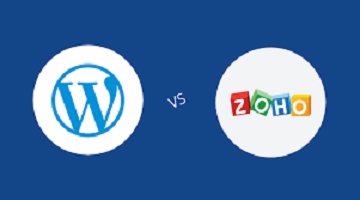Determining which CMS (Content Management System) is “better” between Zoho Sites and WordPress depends on your specific needs, preferences, and the nature of your website. Here are some factors to consider:
1-Ease of Use:Zoho Sites typically offers a more user-friendly interface, especially for beginners. Its drag-and-drop editor simplifies the website building process.
*WordPress has a steeper learning curve initially, but once mastered, it offers more flexibility and control over customization.
2-Customization:WordPress is highly customizable with thousands of themes and plugins available, allowing you to create virtually any type of website.
*Zoho Sites also offers customization options, but they might be more limited compared to WordPress.
3-Scalability:WordPress is highly scalable, making it suitable for small personal blogs to large enterprise websites.
*Zoho Sites may have some limitations in scalability, particularly for very large or complex websites.
4-Support and Community:WordPress has a vast community of developers, designers, and users who contribute themes, plugins, and provide support through forums and documentation.
*Zoho Sites provides customer support, but it might not have as extensive a community as WordPress.
5-Cost:Zoho Sites typically offers subscription-based pricing plans, which may include hosting, domain registration, and other features.
*WordPress itself is free and open-source, but you’ll need to pay for hosting, domain registration, and potentially premium themes or plugins.
6-Integration:Zoho Sites integrates seamlessly with other Zoho products, which might be advantageous if you’re already using Zoho’s suite of applications.
*WordPress offers a wide range of integrations with third-party services and tools, providing more flexibility in building your website.
In summary, if you’re looking for a user-friendly solution with simpler needs and integrated features, Zoho Sites might be a good choice. However, if you prioritize flexibility, scalability, and a vast ecosystem of themes and plugins, WordPress could be the better option. It’s essential to evaluate your specific requirements and test out both platforms to see which one aligns better with your goals.







